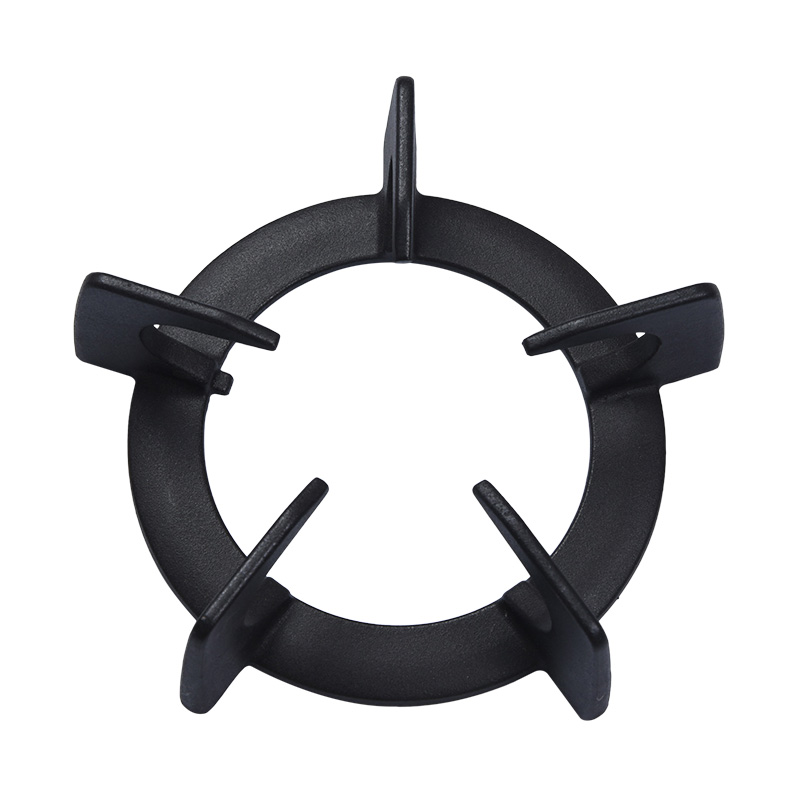Immediate Cleaning After Use: Cleaning the cast iron pan support while it's still warm is crucial for several reasons. The residual heat makes it easier to wipe away food particles and grease, preventing them from hardening or adhering stubbornly to the surface. This step is essential for maintaining the non-stick qualities that seasoned cast iron is known for. Immediate cleaning reduces the chance of moisture accumulating, which can lead to rust formation if left unattended.
Use of Mild Soap: While traditional advice often discourages using soap on cast iron, the reality is that a small amount of mild dish soap can be beneficial, especially if food residues are particularly stubborn or greasy. Choose a biodegradable and phosphate-free detergent to minimize environmental impact. After applying soap, it’s crucial to rinse thoroughly with warm water. Any soap left on the surface can lead to off-flavors in food during subsequent cooking, compromising the quality of meals prepared.
Scrubbing with Non-Abrasive Tools: Employing the right cleaning tools is vital for preserving the integrity of the cast iron. Soft sponges or brushes with nylon bristles are ideal for removing food residues without scratching the surface. Avoid abrasive pads or steel wool, as they can not only damage the seasoning but also expose raw cast iron to moisture, significantly increasing the risk of rust. If necessary, consider using a specialized cast iron scrubber designed to clean without damaging the surface.
Drying Immediately: After cleaning, promptly drying the pan support is critical. Use a lint-free towel to absorb moisture effectively. For added assurance, place the pan support on a stovetop burner set to low heat for a few minutes. This step will evaporate any remaining moisture trapped in crevices. Keeping the cast iron completely dry is the first line of defense against rust.
Seasoning the Surface: After the surface is dry, apply a thin layer of oil using a paper towel or a cloth. The oil should be a high-smoke-point option, like flaxseed, grapeseed, or canola oil, which not only protects the surface but also enhances cooking performance. The seasoning process involves heating the oil to create a polymerized layer that bonds to the cast iron, providing a natural non-stick surface. This process should be repeated periodically to maintain the protective coating and ensure optimal cooking performance.
Storing Properly: Proper storage is as important as cleaning. Store the cast iron pan support in a dry, well-ventilated area to prevent moisture accumulation. If stacking with other cookware, place a paper towel or cloth between items to absorb any moisture and prevent scratches. Avoid storing the pan support in damp locations like under the sink or in basements where humidity levels are high. If necessary, consider using silica gel packets to help control moisture levels in storage areas.
Avoiding Dishwashers: Dishwashers expose cast iron to high temperatures and moisture for prolonged periods, which can strip away the seasoning and lead to rust. Harsh detergents used in dishwashing can break down the oil layer that protects the surface. Always opt for hand washing as the safest and most effective cleaning method for cast iron.
Inspect Regularly: Conducting regular inspections of the cast iron pan support can help catch potential issues early. Look for signs of rust, flaking, or cracks. If rust is detected, use a fine steel wool pad or a non-abrasive scrubber to gently remove it, then wash, dry, and re-season the surface. This proactive approach ensures that any damage is addressed before it compromises the functionality and longevity of the cookware.
Gas Stove Auxiliary Round Four-Claw Support
